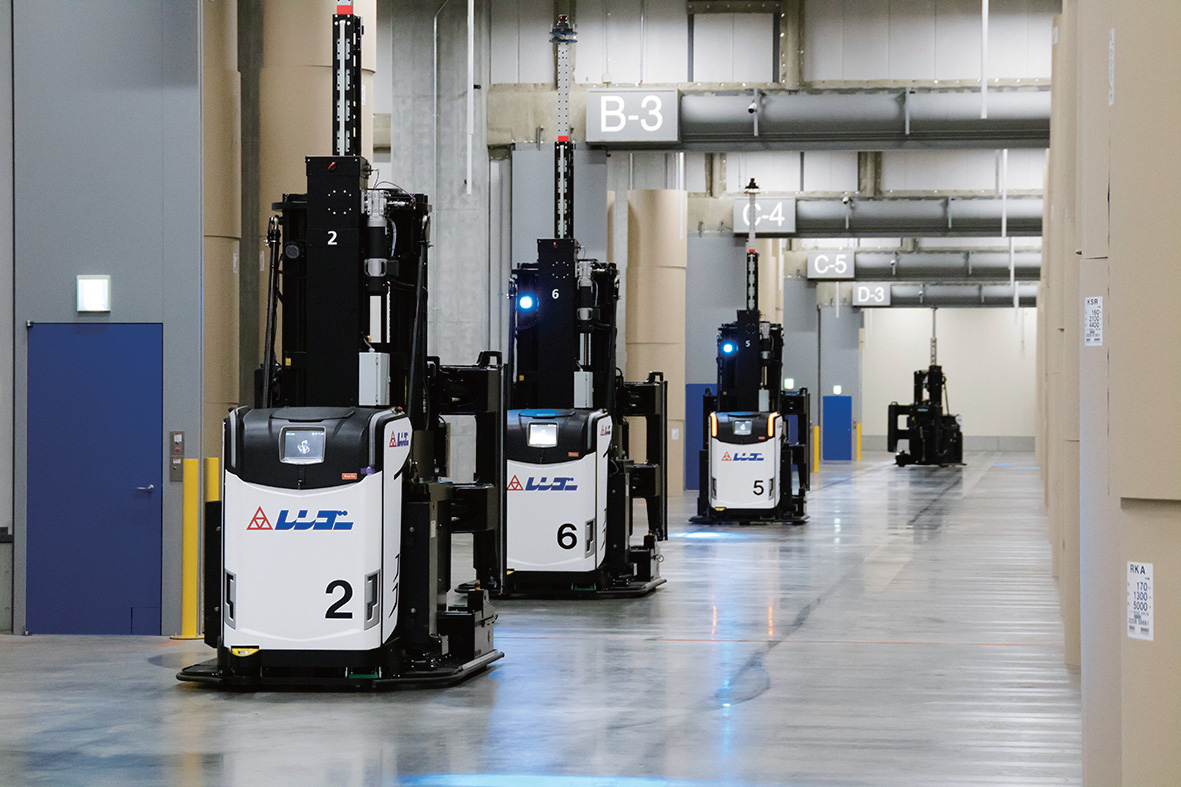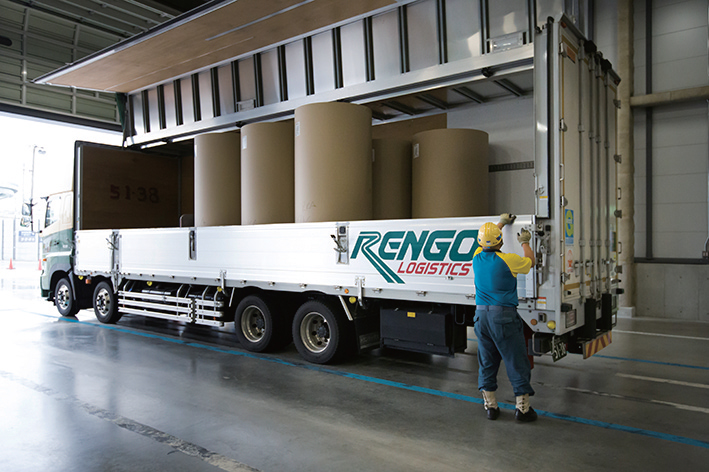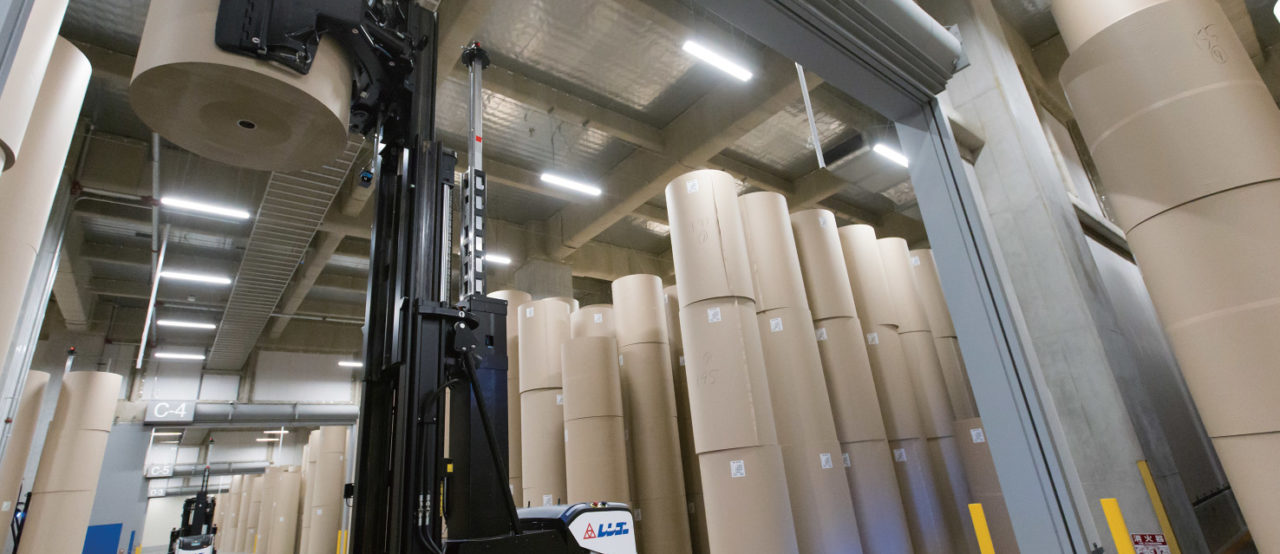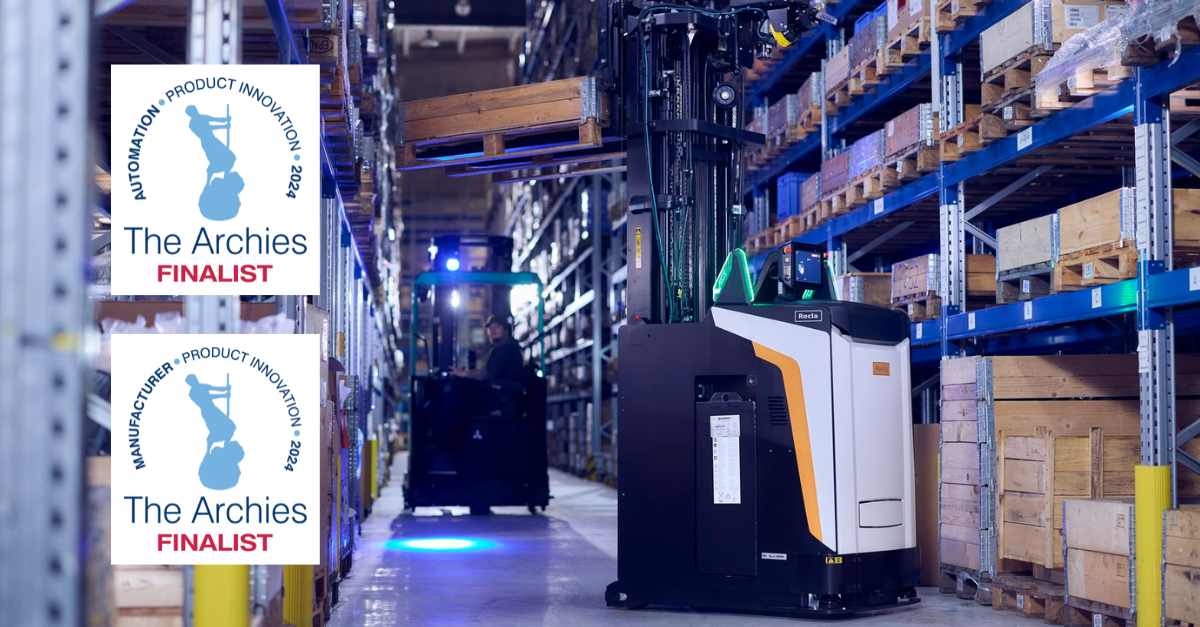RENGO GROUP: A state-of-the-art logistics hub
Rengo Group is the leading company in the packaging industry and the largest corrugated box supplier in Japan. They manufacture and sell packaging materials, mainly paperboard and corrugated board, including flexible and heavy-duty packaging products. The Yodogawa Logistics Center opened in September 2021 as one of the largest distribution centers in the Kansai region.

A multi-tenant logistics warehouse was built jointly with Sumitomo Corporation, part of which is used as Rengo’s base of operations to promote operational reforms, such as improving logistics efficiency, transport quality and service. Rengo is also actively working to improve the working environment for truck drivers from the perspective of a shipper company.
As a package provider, Rengo has six core businesses: the production and sale of corrugated boards and containerboards. The Yodogawa Logistics Center supplies containerboards to box plants in western Japan. It was built on the site of the former Yodogawa Mill, which has been in operation for more than 80 years as a paperboard mill, and has the latest equipment, including automated guided vehicles (AGVs), a warehouse management system (WMS), RFID product management, a track guidance system and a picking application.
The Yodogawa Logistics Center has improved the efficiency of the logistics department and is fulfilling its role as a hub warehouse. It also functions as a joint base during deliveries from eastern Japan to the west of the Kansai region and as a BCP (Business Continuity Plan) in the event of delivery problems due to bad weather at production plants.



We interviewed Yasuhide Fukui, Deputy General Manager, Ryo Nozaki, Deputy General Manager, and Masahiro Shishido, Manager from Rengo Group, who were the first in Japan to introduce a laser-guided roll clamp AGV when the opening of the Yodogawa Logistics Center in 2021:
“The laser-guided roll clamp AGV was proposed by Mitsubishi Logisnext as an example of an overseas installation when we were aware that the number of truck drivers and warehouse workers was decreasing and that we needed to solve this problem with the opening of our new logistics center. The decisive factor was that roll clamp AGVs could automate our warehousing operations as we handle containerboard roll. We heard our installation of clamp AGV was the first of its kind in Japan. Furthermore, conveyors were installed to connect manual and automated areas. 25% of the 20,000 m2 warehouse area is automated; eight roll clamp AGVs receive and dispatch containerboard from the trucks via six conveyors.
Currently, 500 to 1,000 rolls are transported daily by roll clamp AGVs, including storage arrangement. Technologies such as RFID product management, truck guidance systems, and picking applications have enabled us to operate the warehouse very efficiently, even in a large warehouse, with multiple automated and manual lift operators working simultaneously. In addition, the truck driver’s waiting time has been significantly reduced. The system is also highly rated for the realisation of white logistics (initiatives to improve trucking productivity and logistics efficiency and reduce the burden on truck drivers), which we are focusing on, and we are eventually looking at 40% automated warehousing.
The laser-guided roll clamp AGV matched our project for digitisation and labour-saving. It not only allows unmanned loading and unloading but also can be stacked vertically to maximise the use of the storage space. The most significant advantage in actual use is that the AGVs are fully operational 24 hours a day. As it is not rechargeable but battery-replaceable, there is almost no time when the machine is not working.

The key is to fully use this potential and give the right work orders. On average, trucks at Yodogawa logistic center are on standby for less than 30 minutes, which is an outstanding figure. For example, when a truck arrives at the Amagasaki plant for shipment, the dispatch order is sent to the logistic center and generated according to the data, the truck’s loads are ready. If it is manual, workers may not always be able to get on with it immediately, and the time to find the loads is needed. As for roll clamp AGVs, they move immediately and precisely to load the goods onto the conveyor, reducing the workload for the operator.
The great advantage is also that the AGV can be left alone to do its job. The Yodogawa logistic center runs from 7 am to 2 am, including preparing delivery and organising the warehouse for the following day. The operating speed of one AGV is approximately 6 minutes per roll. The entire automated warehouse can be dispatched at a rate of one roll per minute with multiple roll clamp AGVs working. To increase the system’s effectiveness, we are looking forward to furthering advances in the AGVs, for example, speed.
We had difficulties in the beginning because we were introducing new technology. With the follow-up from Logisnext Kinki and Mitsubishi Logisnext, we have been able to solve the problems. In the future, we would like to roll out the system at other sites as well as save labour and thus reduce CO2 emissions.”
Rocla AGVs at Rengo: A state-of-the-art logistics hub



